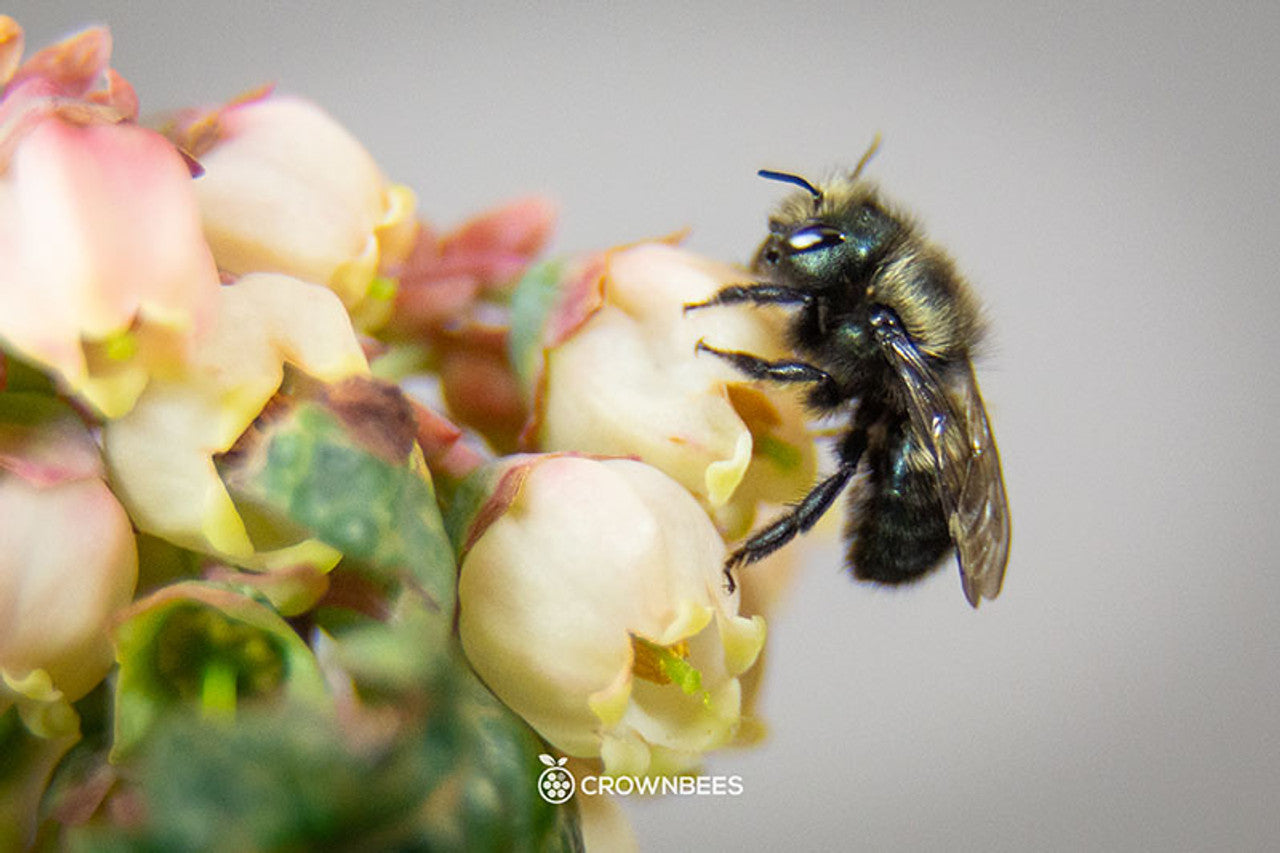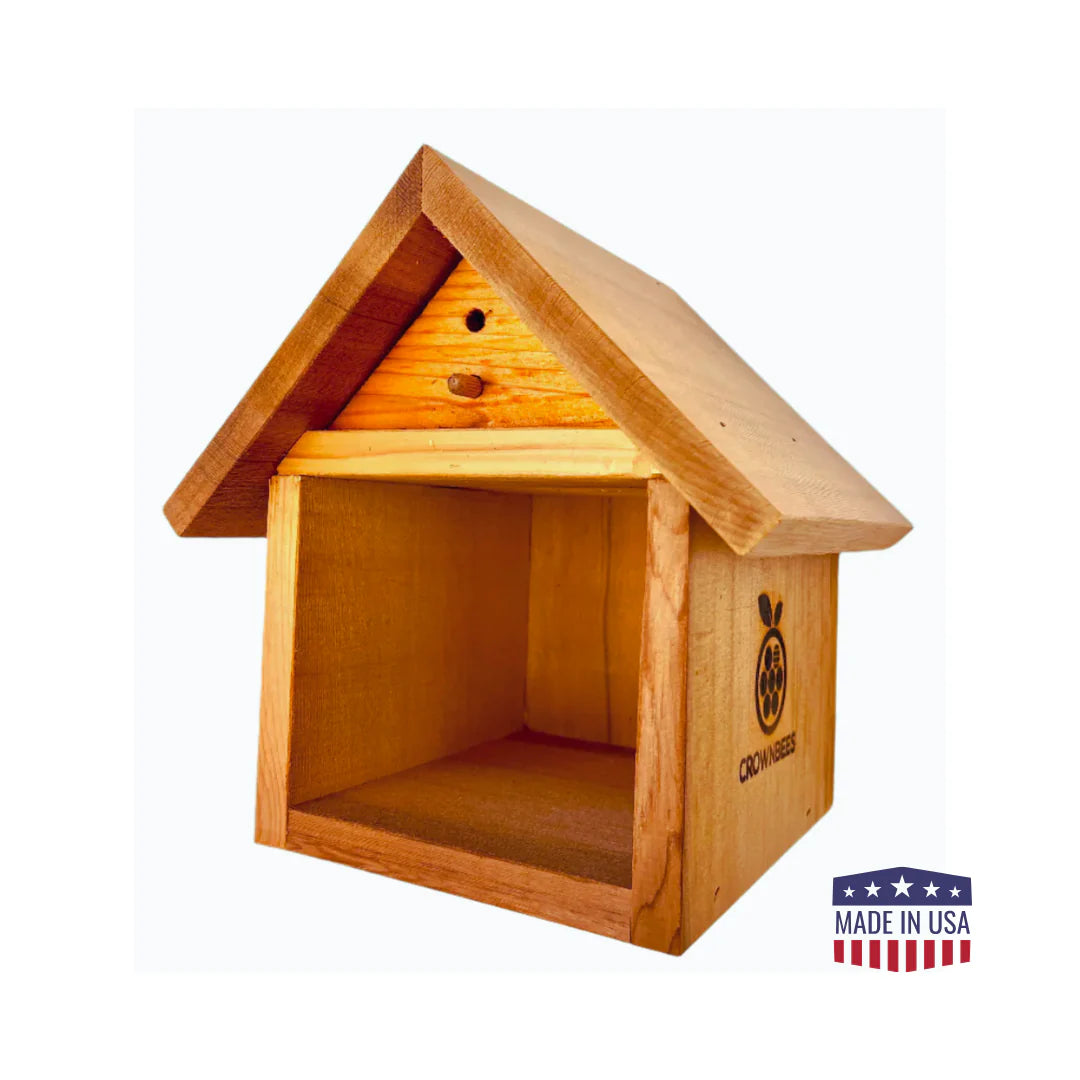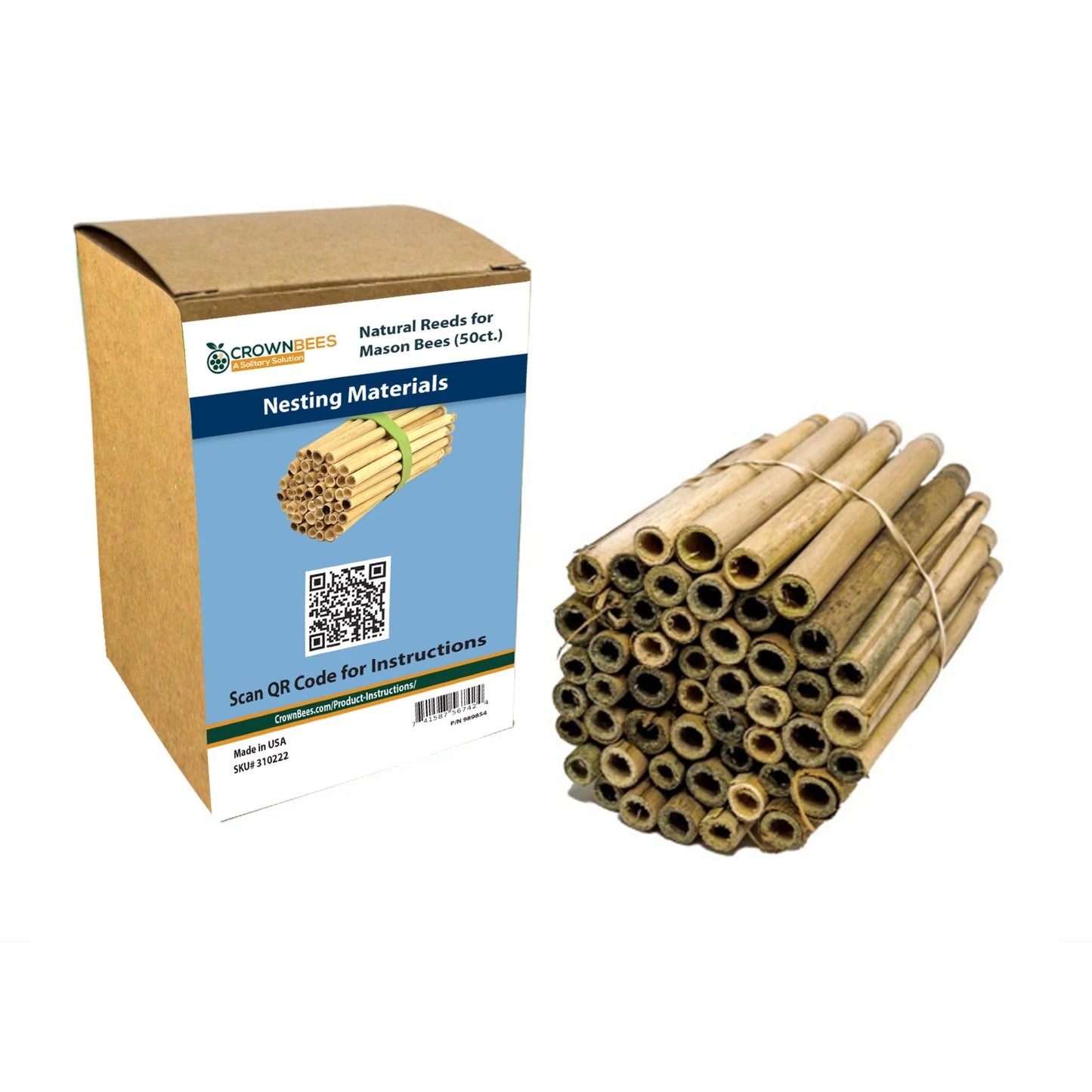
Global climate change already has observable effects on the environment. Glaciers have melted, extreme weather is more frequent and intense, plant and animal ranges have shifted, and plants are blooming earlier.
Figuring out how something as complex as climate change affects bee populations is challenging but not impossible. Recent research has found that climate change affects our pollinators on a physiological level and alters phenology. Since animal pollinators, especially bees, are crucial to our global food supply, we wanted to use this post to explain the connection between climate change and bee declines in a bit more detail.
A Crash Course on Bee Biology for Context
The majority of bees, around 90%, are solitary and live in tunnels in the ground or above-ground cavities. Most spring emerging bee species, including mason bees, overwinter in their cocoons as fully developed adults and emerge in the spring when temperatures rise. A bees' initial body weight is determined by the amount of pollen the mother bee provides the larva during the previous season. Meaning that overwintering adult bees must survive off of their fat reserves until they emerge in the spring. In warm temperatures, bees' metabolism is more rapid, which causes them to use up their fat reserves faster than in colder temperatures.
Some summer emerging species, such as leafcutter bees, don't overwinter as adults but still rely on the pollen provided by the mother bee and consumed by the larva during the previous season. Many summer bee species use summer temperature cues to complete their development process.

Increasing Temperatures and Precipitation and Bee Declines
Aspects of climate change include warmer winters, earlier springs, and an increasing number of days with extreme heat. So, now that you're well versed in the relationship between bees and temperature, you can start to imagine how climate change could affect bee populations.
In one study, researchers found that bees in warmer temps naturally emerged about a month earlier than bees in cold temperatures. They also found that bees that overwinter in warm temperatures or have earlier spring onsets have lower body weights than bees that overwinter in cold temperatures.
Now, I know what you're thinking. So what if the bees are a little smaller?
Well, as it turns out, bigger is usually better in the bee world! We're not saying a large carpenter bee is better than the smaller mason bee, but bigger means more energy among the same bee species. More energy means a bee can forage longer, farther, and in harsher conditions. Longer foraging means a bee is likely to reproduce more, leading to stable populations in the future.
The connection between fat reserves and temperatures is why we recommend that mason bee raisers overwinter their cocoons in their refrigerators! Yes, you can allow your mason bees to complete their life-cycle in natural temperatures. Still, with the extreme and often unpredictable weather accompanying climate change, you run the risk of your bees emerging early or underweight. The cold temperatures of your refrigerator allow your bees to maintain their fat reserves until spring temps are consistent and blooms are open!
Bonus: Telling your guests you have bees in the fridge makes for a great conversation piece at a dinner party!
Climate change is also changing precipitation patterns. The spring and summer of 2021 saw record-breaking rainfall in many parts of North America. Rain can limit the ability of spring bees to collect food for their offspring, which is associated with fewer bees the following year.
Cold Snaps and Spring Bees
Research suggests that climate change may increase temperature fluctuations around the world. These fluctuations often cause our bee raisers to ask, "What happens if daytime temps drop below 55°F/13°C after the bees have already emerged? Will they be able to survive the cold snap?"
If spring temperature fluctuations are severe, such as warm days followed by multiple days of freezing temps, your bees may not survive. But, the truth is bees are tolerant insects that have adapted to live in variable conditions and likely will be fine for a few days in cooler than desired temperatures.
What Mason Bee Raisers Can Do:
If you're worried, you can minimize the danger of wind and cold snaps with a couple of simple steps:
- Mount your mason bee house to face south or southeast to provide maximum sun exposure.
- Plant early blooming flowers close to the mason bee house! Nectar-producing flowers give bees the energy they need to survive. Ensuring they don't have to travel far to find the resources they need during cooler days may help them survive the less-than-ideal temps.
Even if the cold temps reduce survival rates, the bees that do survive will be more fit and produce stronger offspring - natural selection! Allowing nature to adapt to the changing climate is vital for the species' future.

Abnormal Heat and Spring Bees
In typical years, warm summer temperatures allow the new bees to develop from eggs to larvae to adult bees. As mentioned earlier, many spring bees overwinter as adults and survive on their stored fats until spring temperatures reach a consistent 55°F/13°C. On average, the bees' stored fats (energy) at the time of emergence are around 5 -10%, enough for these bees to emerge, mate, and forage (if female). Males die shortly after mating.
When we have higher than average summer temperatures, the speed of development increases, and the new bee becomes an adult quicker than usual. Once the bee becomes an adult, it begins metabolizing its fat stores. The warmer the temps, the faster the bee uses its stored fats. If you have a scorching August/September, the bees may not have enough stored fats to survive until spring temps warm to 55°F/13°C and spring blooms are open. If this happens, the bees will either perish in their cocoons or emerge without enough food sources for them to survive.
What Mason Bee Raisers Can Do:
If your mason bee cocoons were exposed to prolonged durations of excessive heat during the summer, consider harvesting cocoons about two weeks earlier than you usually do. Typically, cocoons are harvested between October - November. Just be sure not to harvest too early as mason bees still need summer temperatures to develop into adult bees fully.
If you feel comfortable, you can open a single cocoon and observe the developing bee. Remember, the bee will not survive once you open the cocoon, so we suggest opening a male cocoon. It's easy to locate a male cocoon because mason bees lay male eggs near the opening of the nesting hole. Once open, if the bee doesn't have fully developed wings or the body shell appears dull, the bee needs more development time. If the body shell is shiny and the bee moves around, you can harvest your cocoons.

Suppose excessive heat continues year after year (which is predicted to happen). In that case, you should consider harvesting half of your bees a bit early and leaving the other half to adapt to the changing temperatures. You will likely see lower survival rates in those left to adapt, but those that do will be more fit and produce stronger offspring - natural selection! Allowing nature to adapt to the changing climate is vital for the future of the species.
Altering Phenology - Mismatches Between Bee Emergence and Spring Blooms
Let's start with what phenology means. Phenology is the relationship between environmental conditions and biological processes such as bloom timing for flowing plants and insect development, or more simply, nature's calendar.
Bees and flowering plants have evolved together for millions of years! It's a mutual relationship where the bees get pollen and nectar from the plant, and in turn, the plant uses the bee to carry its pollen to other plants of the same species, or pollination! Over time, plants developed flowers that attract certain bees (bloom timing, colors, scents), and bees adapted certain features to carry pollen more effectively (emergence timing, hairy bodies, behaviors). This relationship is co-evolution!

However, climate change is messing with some of these relationships! Some plant-pollinator couples respond to environmental cues in the same way, but others do not. For example, many plants bloom in response to snowmelt, and many bees emerge in response to temperature. If flowers bloom before the bees emerge, then plants won't get pollinated. If bees emerge before the plants bloom, bees will not have the food sources necessary to reproduce. These mismatches in the emergence of bees and spring blooms are expected to become more common as climate change continues.
Video Explanation: High Country News produced a short video, "Wild Science: Will climate change force bees to miss flower season?". It's definitely worth a watch!
Warmer winters are especially troubling in our naturally warm climates, such as Arizona and Utah. A study from Northwestern University and the Chicago Botanic Garden has found that climate change appears to be pushing the blueberry mason bee to its physiological limits. Because their emergence times are altered, they have fewer pollen resources and fewer mates. Furthermore, even if the bees can shift their range up the mountains to cooler climates (not all bee species can make shifts), they move away from certain desert plants that rely on the bees for pollination.
As bees decline, we are likely to see certain plant species decline as well.
In the future, warm winters and increased periods of extreme heat are predicted to occur more often, which will likely be a severe challenge to wild-bee populations.
Wondering How to Help?
Feeling inspired to help our pollinators and overwhelmed at the same time? I get it! Climate change is complex, and it's hard to grasp the problem and solutions fully. You'd be correct in telling me that individual action alone is unlikely to make the global changes necessary to slow climate change. We need business and industry leaders to do their part, and we need local, national, and international policies to guide sustainability initiatives. But to that, I say, don't underestimate your impact!
We keep businesses open with our purchases and influence policies with our votes and voices. Our everyday choices affect the environment. From what we eat to how we clean our houses, there's a lot we can do to minimize our impact on our planet.
Start with yourself and then inspire others. Start in your home, and then teach your community. Make sustainable living a habit, and you'll be helping to tackle one of the biggest global challenges of our time. And check out our other blog posts on sustainable living and protecting our bee populations!
Together, we can do this!


